Earth Systems Lecture 9
1/25
There's no tags or description
Looks like no tags are added yet.
Name | Mastery | Learn | Test | Matching | Spaced |
|---|
No study sessions yet.
26 Terms
What happens when rocks are stressed?
-Faults
-Folds
-Stress and strain – ancient and modern
-Metamorphism: Regional, Contact, Hydrothermal, Impact
-Importance of deformation and geological structures
What is stress generated by?
- Gravity
- Tectonics – compressional or tensional.
Stress = Force/Area = Pressure, Pascals (Pa)
Stress results in strain (i.e. deformation of some sort.)
Faults
-break in a continuous unit of rock, accompanied by displacement of the two sides
-indicate brittle failure
-Slip may be rapid (up to few m/s for ground velocity- EARTHQUAKES), or slow
-May indicate compressive, extensional or shear stresses
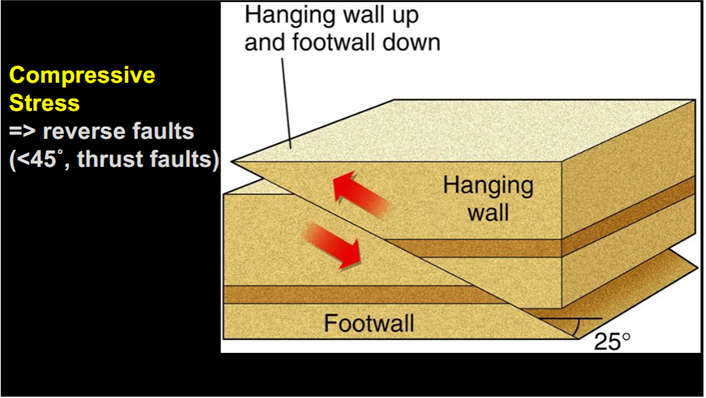


Graben and Horst Structure
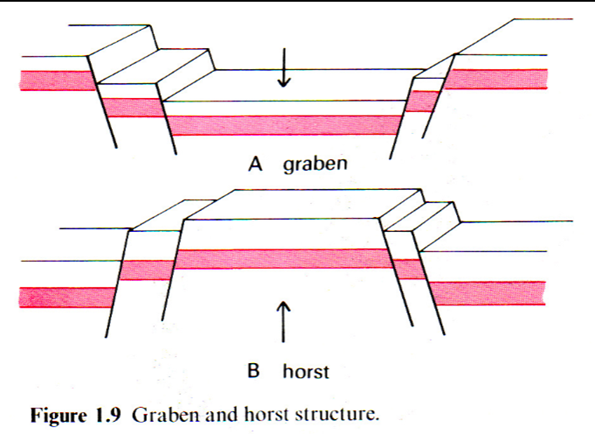
Strain
-Flexure of a continuous unit of rock
-indicates ductile behaviour… implications?
-Usually associated with compressive stress
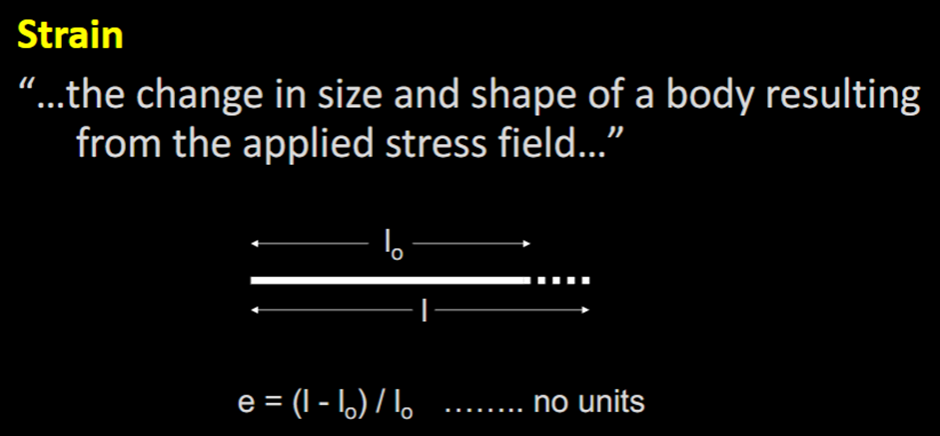
Strain rate
-The response of rocks reflects not only the applied stress, but
-the time for which it is applied, and
-the rheological behaviour of the rocks
-Higher applied stress—more likely to cause faulting in rocks; lower stresses applied for longer more likely to lead to folding. i.e. the same net strain accommodated in a different manner.
Measuring strain
-Strain markers - Fossils, pebbles, bubbles.
-Calculate the shortening/elongation in a region from folds and faults by unbending and unstacking.
-Geodetic measurements—GPS and InSAR
Metamorphism
A change in form from original igneous, sedimentary or metamorphic rock
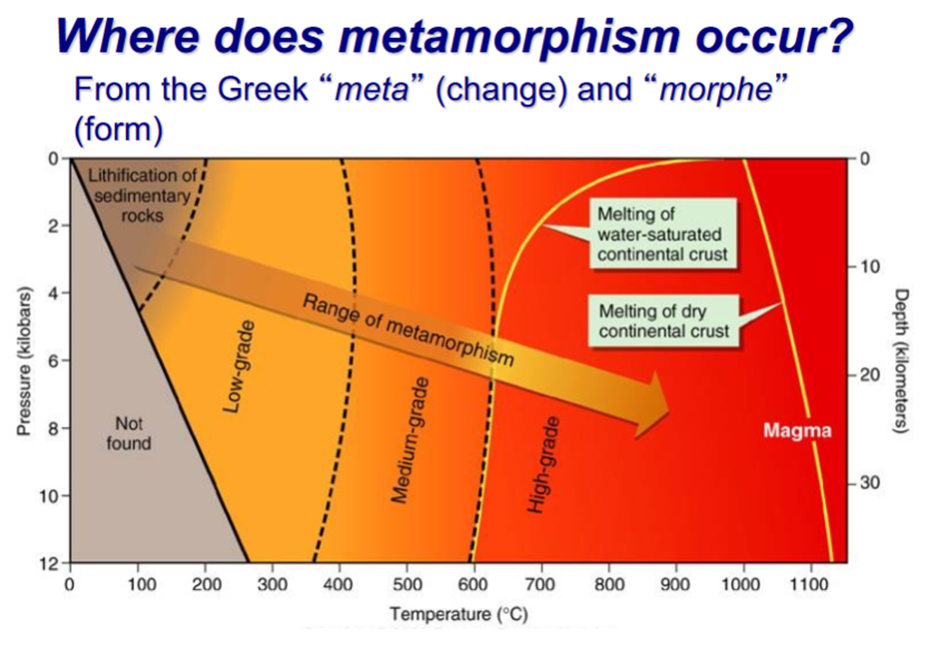
Rocks exhibit two types of change
–New minerals form at the expense of existing ones
–Rock texture is altered by changes in size, shape, and orientation of minerals
Original rock type
–Essential to determining what reactions will take place
–Presence of chemically active fluids can cause some change in composition
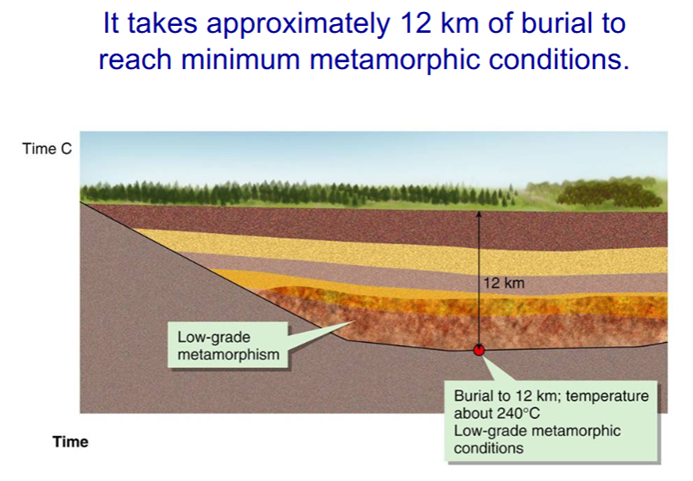
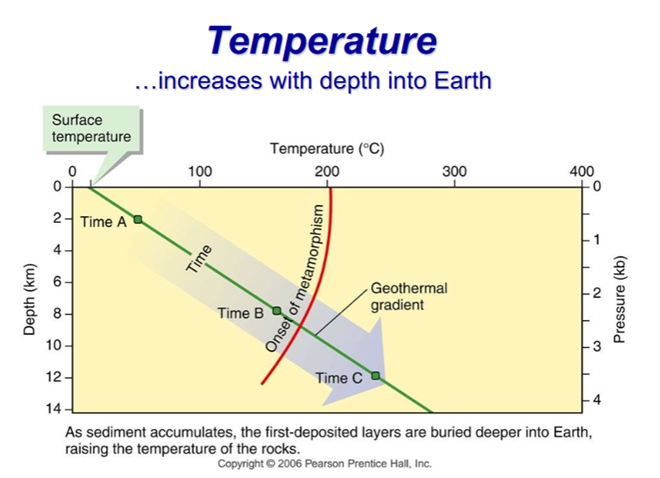
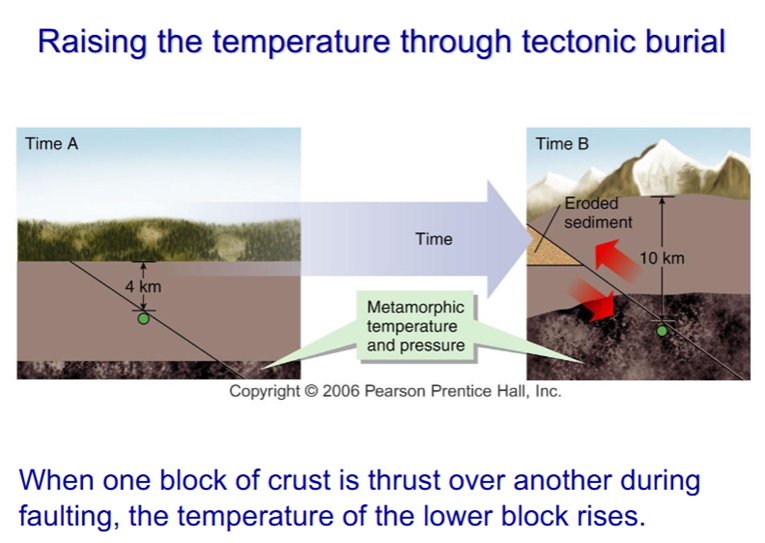
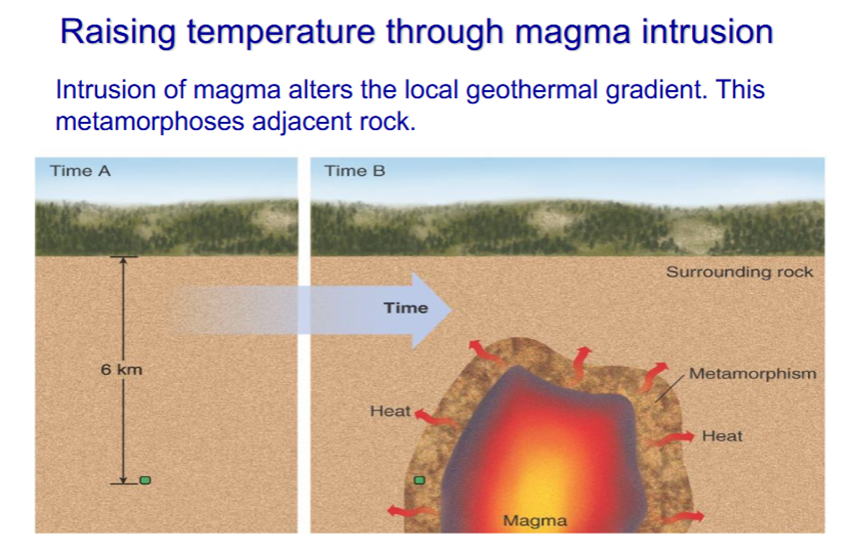
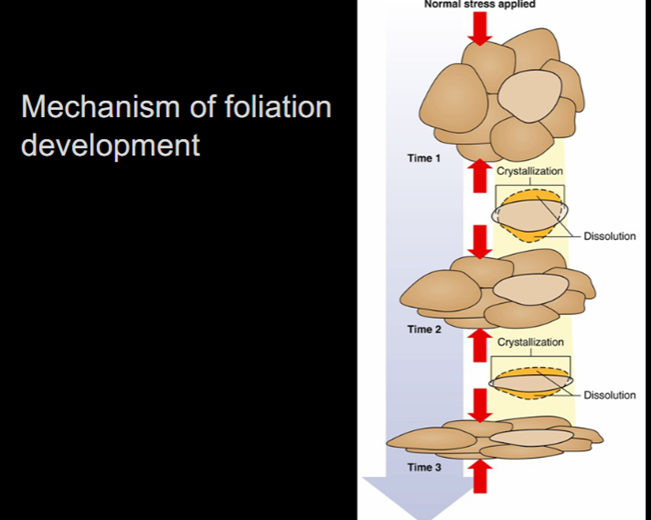
Classification of Metamorphic Rocks
-Composition and texture: Metamorphic processes change the minerals and often their form. Therefore, texture and composition are the primary criteria for classifying metamorphic rocks.
-Foliation: Many regional metamorphic rocks display foliation, due to the alignment or recrystallisation of minerals.
-Foliation becomes stronger with increasing metamorphic grade.
Index Minerals
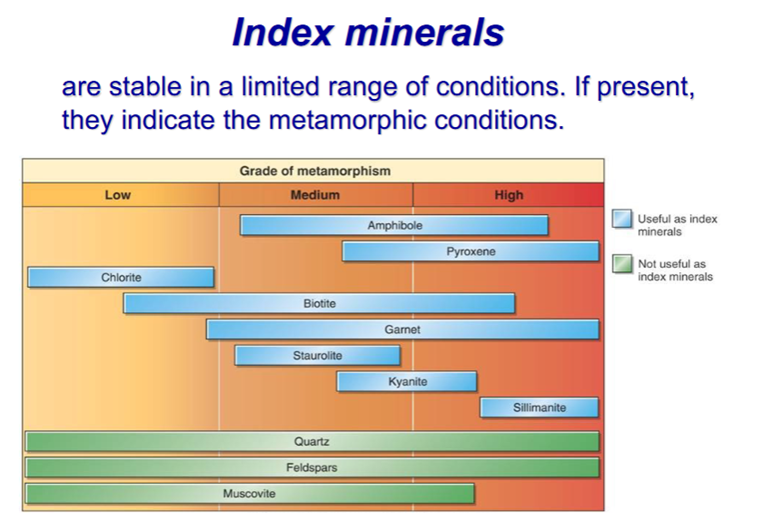
Regional Metamorphism
–Occurs along subduction zones and active mountain- building regions.
–Broad, large-scale, pressure-driven in large part.
–Not tied to single intrusion, mountain, or other singular location.
–Associated with intense deformation—folding and faulting.

Fluids in Metamorphism
-Fluids—water and other gases—can be gained or lost during metamorphism.
-In some environments once fluids are lost, they may not be replaced, therefore reverse reactions (retrograde metamorphism) are prevented.
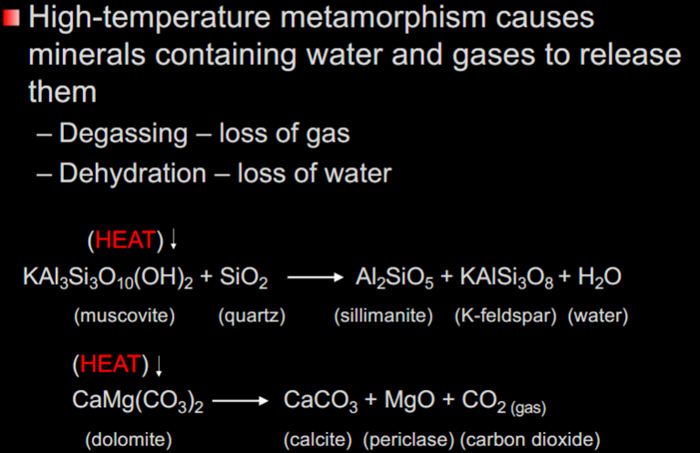
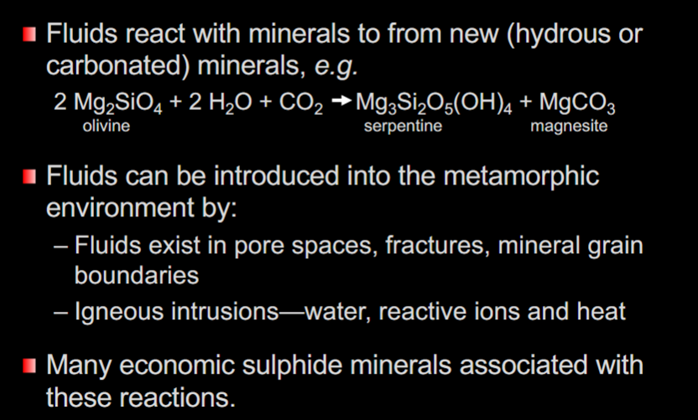
Contact Metamorphism
–Occurs at the margins of igneous intrusions, and to a lesser extent, under lava flows.
–Heat is the dominant control—pressure not so important.
–Metamorphic grade is highest close to an intrusion.
–“Hornfels” is the most common contact metamorphic rock.
How do metamorphic rocks get exposed?
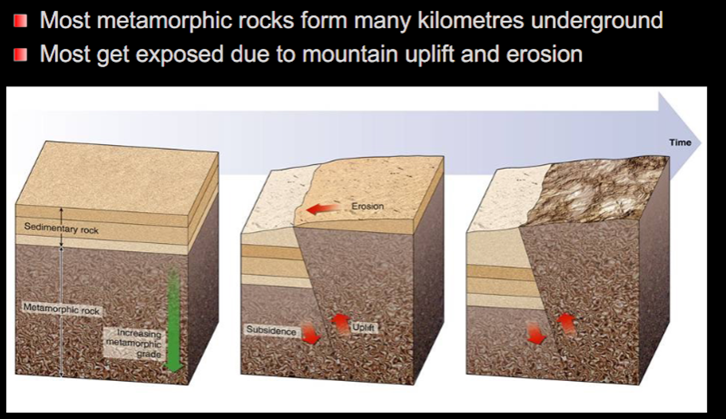
Impact metamorphism
-Consequence of asteroid/comet/meteoroid strikes.
-May strike at >20 km/s
-Local effects on target rocks including cratering, shock metamorphism, melting, brecciation and dislocation
Weathering
Weathering is the in situ breakdown, decay, disintegration or alteration of rocks at or near the Earth’s (land) surface by physical, chemical and biological processes.
Often several processes act together.
Weathering is an important part of soil formation.
Physical weathering
-Rock is broken down into smaller particles.
-The surface area of the rock increases.
-By breaking, grinding, cracking
-No change in the composition of the rock
-By water, ice, waves, wind, (small) rocks, sand, organisms
Chemical weathering
-Change in composition of the rock, incl. change in colour.
-By water, carbon dioxide, organic acids, oxygen
-Organisms play an important role in weathering.
-Often several processes act together.
Water: Physical and chemical weathering
-Meteoric water: Rain, snow, hail, etc.
-Ice: Wedging by freeze expansion / thaw contraction
-Surface and subsurface water: Soil-water, groundwater, rivers, currents, (ocean) waves
Frost action
-Water becomes ice and expands.
-Diurnal temperature variation, frost at night, thaw during the day e.g. potholes on a road.
Exfoliation (or onion skin weathering)
-Shedding of outer layers
-Igneous (granite, basalt) and metamorphic rocks
-Debate on processes!
-Reduction in (tectonic) pressure leads to cracks, many parallel to surface.
-Water enters in cracks. Chemical weathering promotes formation of (clay) minerals with a larger volume than the original minerals. This leads to shedding of the outer layers. But: This cannot explain exfoliation at 100 m depth.
Abrasion
-Grinding of loose sand, stones or rocks or against a rock
-Wind abrasion
by wind-blown grains of sand
-Water abrasion
by pebbles moving against a rock in a river,
by waves carrying sand and pebbles smashing against a rock on a coast
-Glacial abrasion (ice)
by loose rocks and stones embedded in the base and sides of a glacier
Root wedging
by plants
Effects of Physical Weathering
-Rock is broken down into smaller particles

Weathering by Organisms
-The role of organisms in weathering is poorly understood.
Physical weathering
-Root wedging
-Burrowing
-Bioturbation (ants)
Chemical weathering
-Bacteria, lichen, fungi
-Breakdown organic matter
-Excretion
-Organic acids contribute to weathering in soils.
Chemical Weathering
Change in composition of the rock, incl. change in colour
Acid hydrolysis
-Silicate weathering (feldspars, mica, amphibole, olivine)
-Carbonate weathering (limestone, dolomite, chalk)
Dissolution
-Salts: Halite (NaCl), gypsum (CaSO4.2H2O)
Oxidation
-Pyrite (FeS2), iron-rich olivine (Fe2SiO4), peat


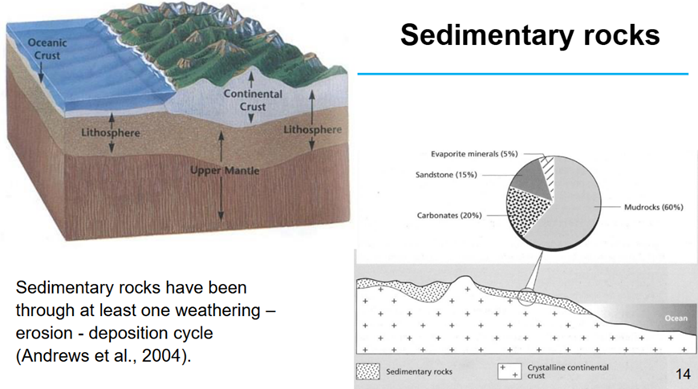
Silicates Dominate Minerals in the Upper Continental Crust
Silicate Weathering
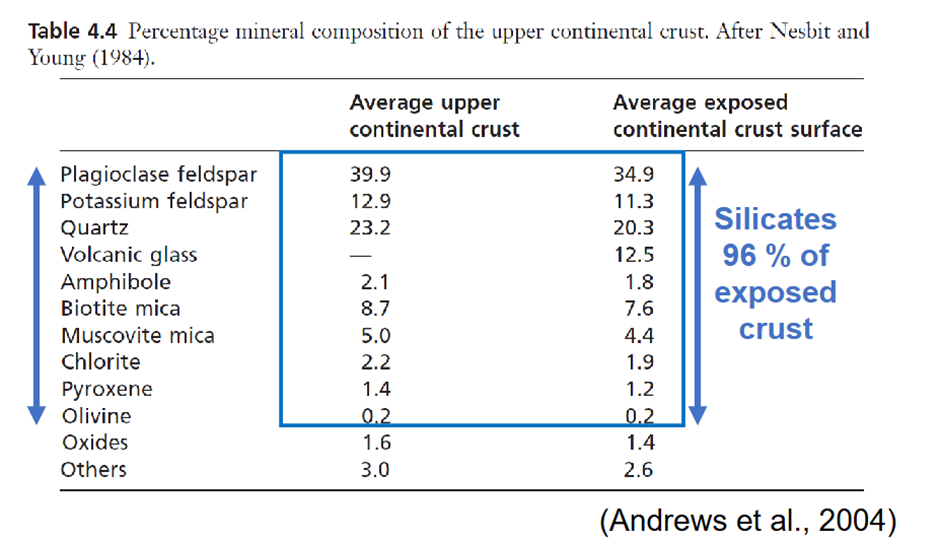
Main silicate minerals in upper continental crust:
-Plagioclase feldspar (e.g. CaAl2SiO8)
-Potassium feldspar (e.g. KAlSi3O8)
-Quartz (SiO2)
Key silicate minerals in mud-rocks, 60 % of sedimentary rock:
-Clay minerals (e.g. kaolinite Al2Si2O5(OH)4 )
-Quartz (SiO2)
Acid hydrolysis of silicate minerals is the dominant chemical weathering process on Earth, as silicate minerals are very abundant. Silicate weathering generally is a slow process.
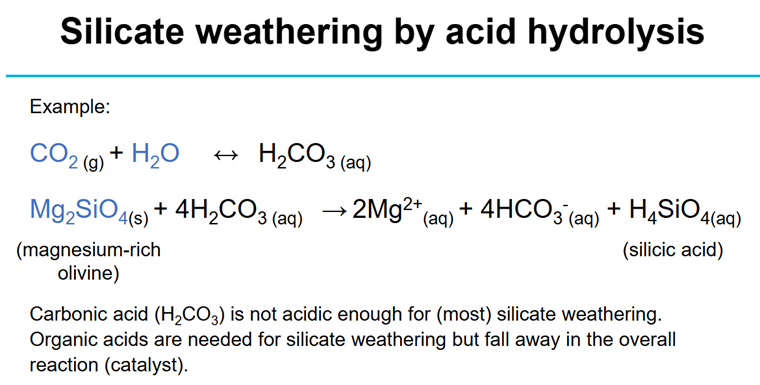

Products of Silicate Weathering
-Clay minerals
-Silicic acid (H4SiO4)
-Metal ions (e.g. Ca2+, Mg2+, K+)
-Bicarbonate ions (HCO3-)
Carbonate weathering

Acid hydrolysis (i.e. silicate weathering and carbonate weathering) consumes CO2:

This consumption of CO2 during weathering is part of the long term (geological) mechanism by which CO2, a greenhouse gas, is removed from the atmosphere, preventing the planet from overheating.

Change in composition of rocks
Acid hydrolysis
• Silicate weathering (feldspars, mica, amphibole,
olivine)
• Carbonate weathering (limestone, dolomite, chalk)
Dissolution
• Salts: Halite (NaCl), gypsum (CaSO4.2H2O)
Oxidation
• Pyrite (FeS2), iron-rich olivine (Fe2SiO4)
Dissolution of Salts
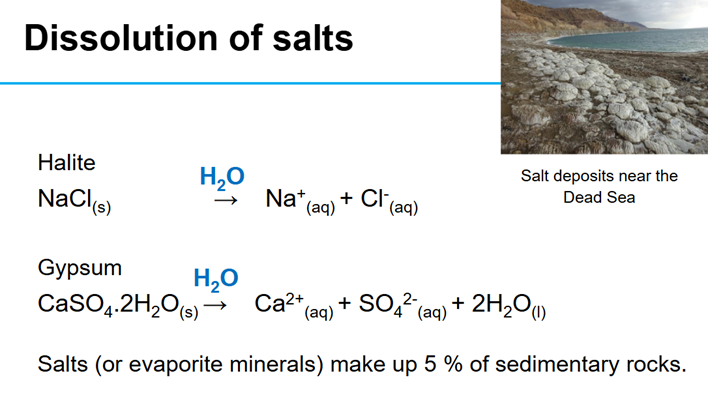
Oxidation
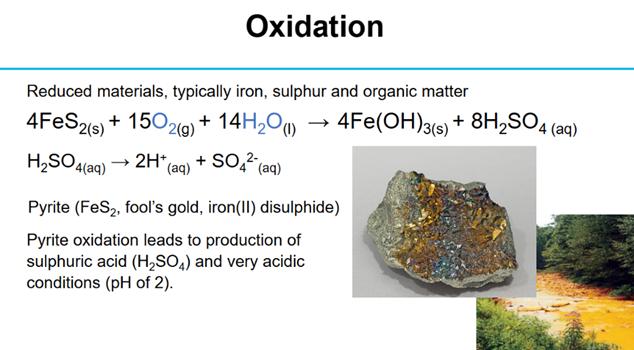
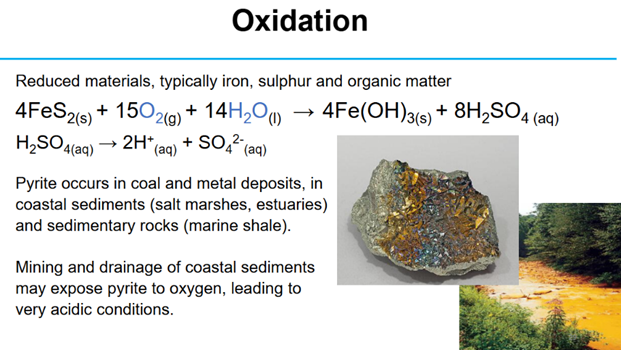
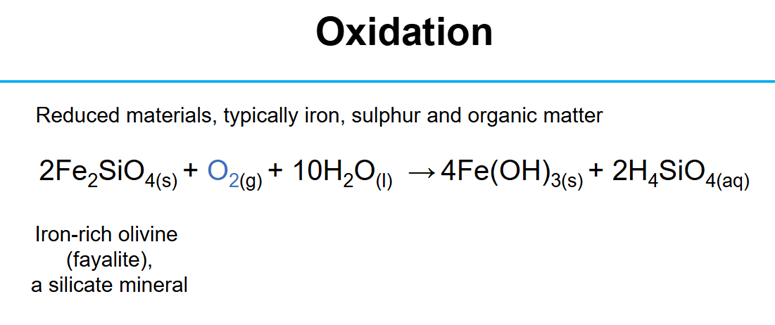
Peat
Organic matter (plant remnants) that has accumulated over thousands of years, usually in fens, bogs, moors or mires.
The BGS classes peat as a rock, others class it as a soil
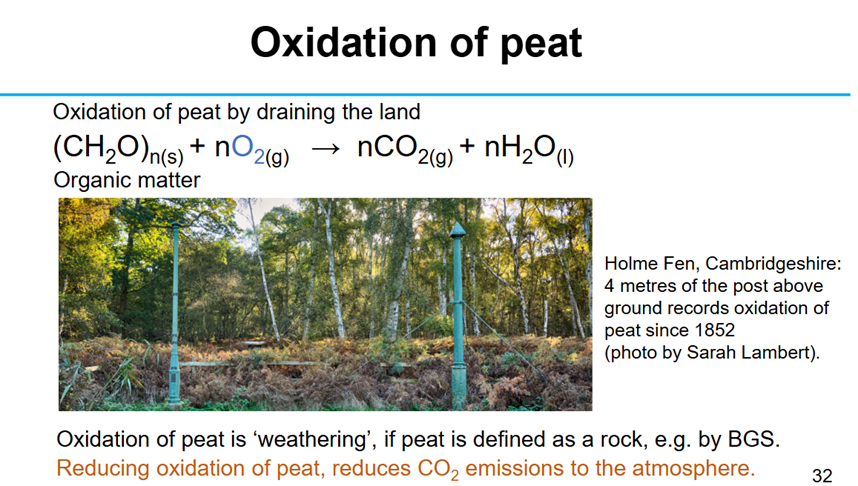
Products of Weathering
Weathering forms regolith, a blanket of loose, altered rock and dust that is the starting point for soils.
Weathering and Soils
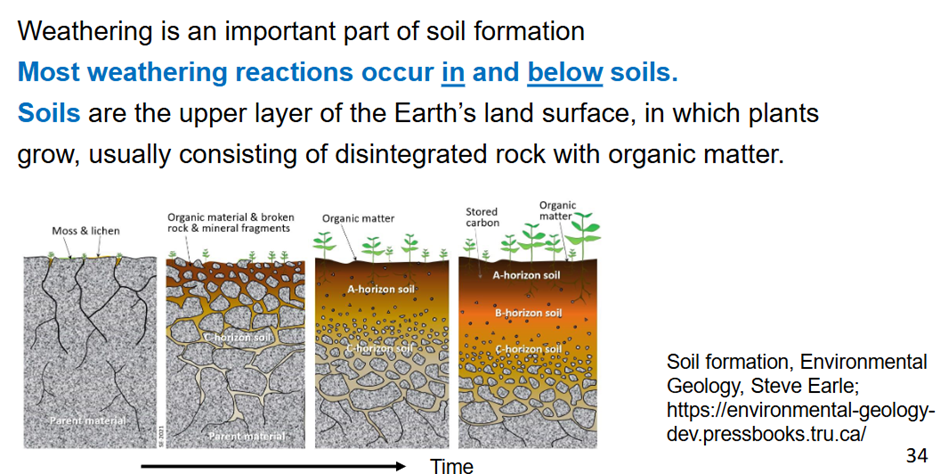
Chernozem – Black earth
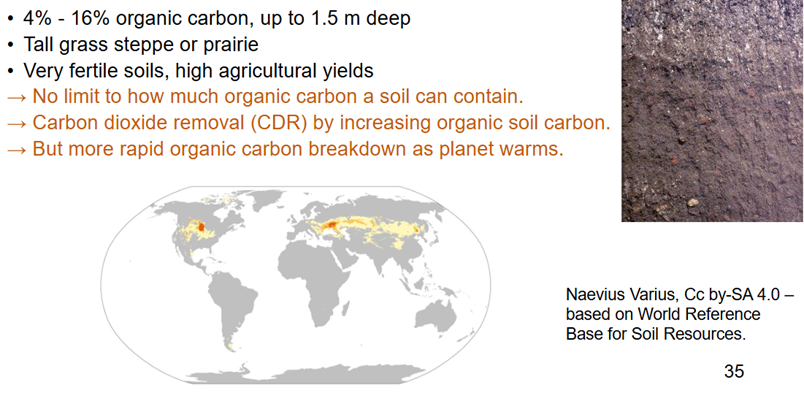
Soil Erosion
-Loss of fertile topsoil
-Decrease of soil organic carbon content
-From farmland, e.g. during harvest and when bare.
-Creates a CO2 source to the atmosphere (in rivers, lakes, coastal seas, ocean).
-Contributes to eutrophication.
Reducing soil erosion is win – win:
-Retains soil fertility.
-Lowers CO2 emissions.
-Reduces eutrophication.
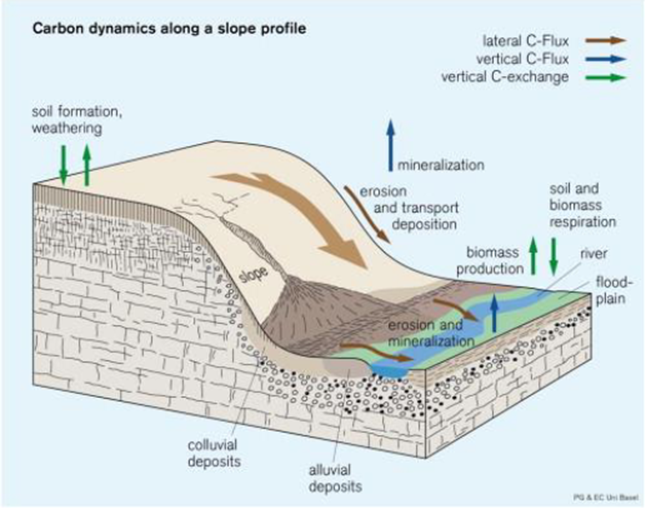
Erosion by Water
-Rivers transport weathering products, as suspended and dissolved load downstream, to the ocean.
-Breakdown of organic matter (from soil erosion, primary productivity and sewage) leads to CO2 outgassing in rivers, lakes, coastal seas and the ocean.
Erosion by Wind
Transport by Wind
Wind erosion when large areas of bare land are exposed to strong winds, e.g. bare agricultural land in winter.
-Loss of fertile topsoil (organic carbon)
-Reduce wind erosion by cover crops, hedge rows, grass strips, etc.